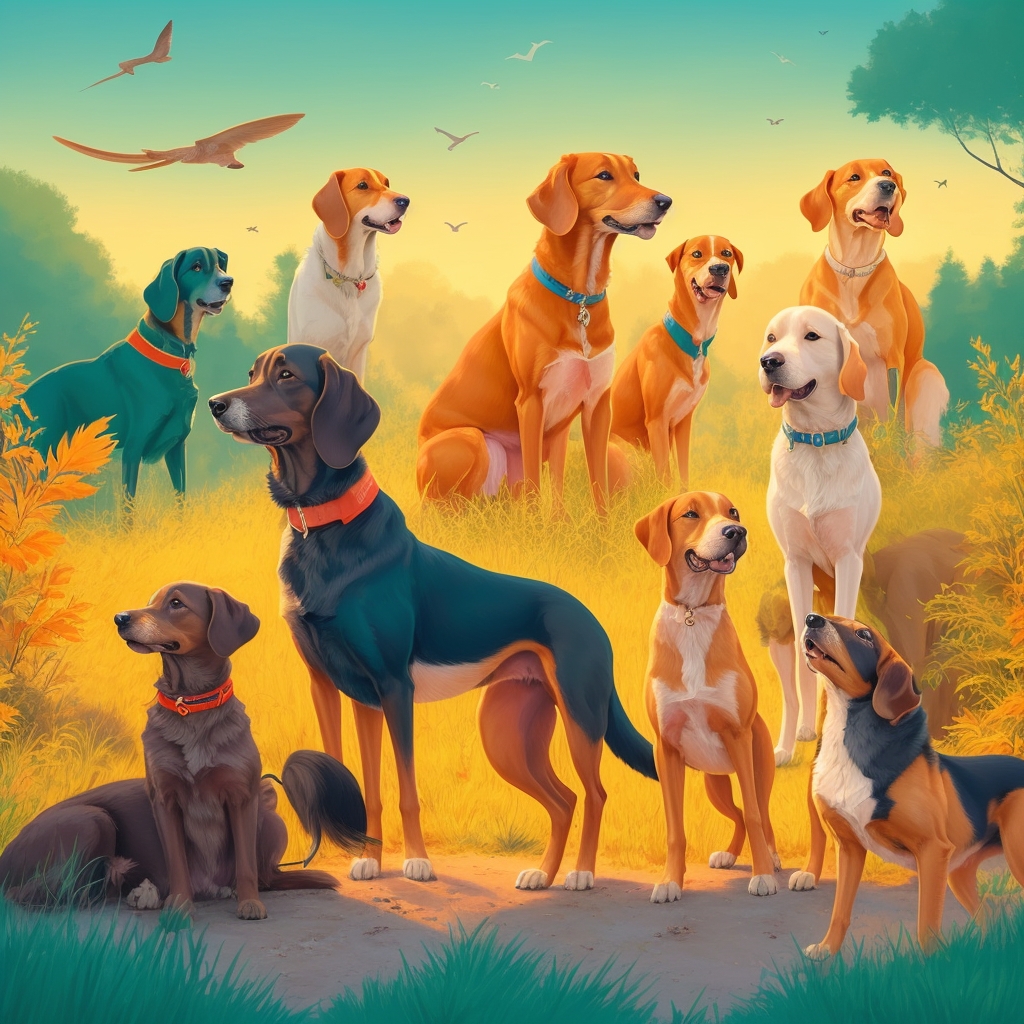Hunting dogs play an essential role in the tradition of hunting, whether for tracking, pointing, or retrieving game. Each breed has been developed for a specific function, depending on the types of game and hunting methods. This article presents the different breeds of hunting dogs, their characteristics, and their practical applications.
Pointing Dogs
Characteristics
Pointing dogs, also known as gun dogs, are known for their ability to locate game and mark its position by freezing. They are often used for bird hunting.
Examples of Breeds
- English Setter: This dog is known for its exceptional sense of smell and its ability to work over long distances. It’s often used for hunting birds like pheasants and partridges.
- German Shorthaired Pointer: Versatile and intelligent, this dog can hunt on land and in water. Its agility and endurance make it an excellent choice for hunting.
Use Case
A hunter might use an English Setter to range across a wheat field, where the dog will “point” when it detects game, allowing the hunter to prepare to shoot.
Retrieving Dogs
Characteristics
Retrieving dogs are specially bred to recover game after it has been shot down. They excel in water and on land, and their keen sense of smell and olfactory memory are remarkable.
Examples of Breeds
- Labrador Retriever: Known for its friendly temperament and excellent retrieving ability, the Labrador is often the preferred choice for duck hunting.
- Golden Retriever: Similar to the Labrador, this dog is also used for retrieving game. Its gentle nature and sociability make it a popular family breed.
Use Case
During a duck hunt, a hunter can rely on a Labrador to plunge into the water and bring back the game, minimizing losses.
Scent Hounds
Characteristics
Scent hounds are used to track wounded or lost game. Their exceptional sense of smell and determination make them valuable partners in hunting.
Examples of Breeds
- Basset Hound: With its exceptional sense of smell and calm temperament, the Basset Hound is often used for rabbit hunting.
- Beagle: This dog is also known for its keen sense of smell and ability to work in packs. It’s frequently used for small game hunting.
Use Case
A hunter who has wounded game can use a Beagle to follow the blood trail and find the animal, which is crucial for ethical hunting.
Hounds (for coursing/tracking)
Characteristics
These dogs are bred for pack hunting and are often used in coursing hunts, where game is pursued until it’s captured.
Examples of Breeds
- Foxhound: Known for its endurance and speed, the Foxhound is often used in fox hunts.
- Bloodhound: Famous for its exceptional sense of smell, this dog is also used to track wounded game.
Use Case
In a coursing hunt, a Foxhound can follow prey over long distances, allowing the pack to stay in contact with the game.
Key Points and Best Practices
- Choose the Right Breed: It’s essential to select a hunting dog breed that matches your type of hunting. For example, a Labrador is ideal for waterfowl hunting, while an English Setter is better suited for land hunting.
- Training: All hunting dogs require rigorous training. Socialization, obedience, and specific hunting work techniques are crucial for developing their skills.
- Health and Well-being: Ensure your hunting dog receives regular veterinary care, an appropriate diet, and enough exercise to maintain its physical condition.
- Hunting Ethics: Hunting should always be practiced ethically, respecting hunting seasons and local regulations. Using a dog to retrieve wounded game is a responsibility that must be taken seriously.
Conclusion
Hunting dogs are valuable companions for hunting enthusiasts, bringing unique skills and abilities that enrich the experience. Whether you’re an experienced hunter or a novice, understanding the different breeds of hunting dogs and their specific traits will help you make the most appropriate choice for your needs. By adhering to best practices and committing to proper training, you and your dog can share a fruitful and ethical relationship in the world of hunting.







